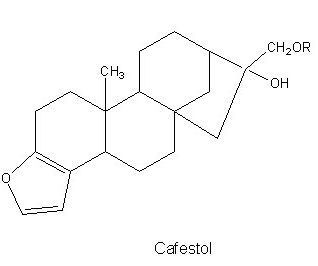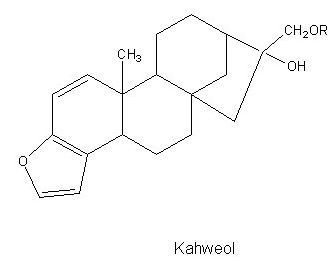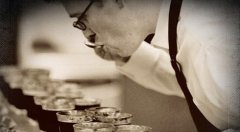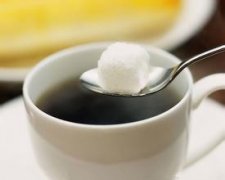What is caffeine alcohol? General knowledge of high-quality coffee learning coffee
Coffee alcohol is a diterpene compound found in coffee. Coffeohol is high in unfiltered coffee, such as Turkish coffee, but is negligible in filtered coffee.
In the 1980s, it was found that consumption of unfiltered coffee raised serum cholesterol levels, a result caused by the caffeine and caffeinol in coffee.
Coffee beans can be separated into coffeeol and coffeeol, which are fat-soluble substances of diterpenes. The only difference between them is the addition of a double bond to the caffeine.


The concentrations of these two substances vary according to coffee variety, Arabica coffee beans contain caffeine and caffeine, while Robusta coffee beans contain half of caffeine and almost no caffeine. These two substances can make up as much as 1% of Arabica beans.
Coffeohol was more effective at raising serum cholesterol than caffeeohol, and the mixture of caffeeohol ( 60 mg/day) and caffeeohol ( 51 mg/day) was only slightly better at raising serum cholesterol than pure caffeeohol ( 64 mg/day). Due to the difficulty of purification and the poor stability of this diterpene, the effect of pure caffeinol on serum cholesterol is unknown.
Both substances can be extracted with hot water but remain on filter paper. This explains why Northern European boiled coffee, Turkish coffee and French compressed coffee contain relatively high amounts of caffeine and coffeesol ( 6-12 mg/cup), while filtered coffee and instant coffee contain low amounts of caffeine and coffeesol ( 0.2-0.6 mg/cup). Although diterpenes are relatively high in steam-brewed espresso coffee, they are only a minor source of caffeine ( 4 mg/cup) due to the small amounts consumed.
Important Notice :
前街咖啡 FrontStreet Coffee has moved to new addredd:
FrontStreet Coffee Address: 315,Donghua East Road,GuangZhou
Tel:020 38364473
- Prev

Boutique Coffee the basic concept of coffee-2
Second, the main ingredients of coffee 1. Caffeine is the most eye-catching of all the ingredients of coffee, with a particularly strong bitter taste. It belongs to a kind of phytoxanthamins (animal muscle components). It has the same properties as theobromine contained in cocoa, green tea contains the same theophylline, and the percentage of reduction after baking is very small. Caffeine has a very extensive effect and can affect the brain, heart and blood of the human body.
- Next

How to make a good siphon coffee
1. Siphon coffee is best made without hot water or boiled water, because the more dissolved oxygen in the water (there is almost no dissolved oxygen in hot and boiled water) and the higher the hardness of calcium and magnesium ions in the water (calcium and magnesium ions, not copper, iron, lead and mercury ions), the deeper the metasomatism replacement reaction between water and the good substances in coffee powder, the easier it is to replace the good taste. I added a high calcium and magnesium ion here.
Related
- Beginners will see the "Coffee pull flower" guide!
- What is the difference between ice blog purified milk and ordinary milk coffee?
- Why is the Philippines the largest producer of crops in Liberia?
- For coffee extraction, should the fine powder be retained?
- How does extracted espresso fill pressed powder? How much strength does it take to press the powder?
- How to make jasmine cold extract coffee? Is the jasmine + latte good?
- Will this little toy really make the coffee taste better? How does Lily Drip affect coffee extraction?
- Will the action of slapping the filter cup also affect coffee extraction?
- What's the difference between powder-to-water ratio and powder-to-liquid ratio?
- What is the Ethiopian local species? What does it have to do with Heirloom native species?

